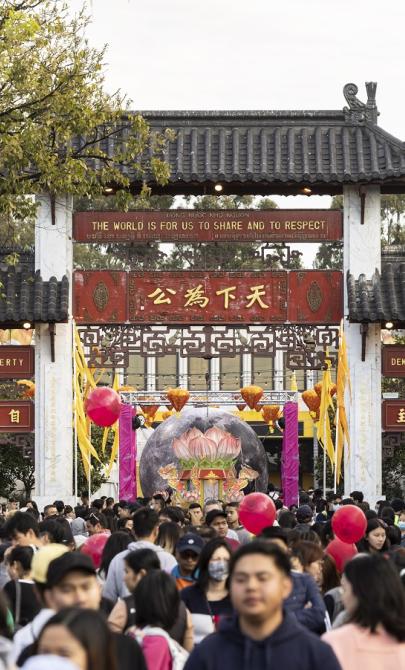Japan under the Shoguns (794-1867)
About this module
Using an inquiry-based approach, this module develops students' skills as historians through engaging historical sources. Featuring sources from the National Library's collections, the resource caters for flexible approaches to suit diverse classroom contexts and learning styles.
Copyright for teachers
You can download all collection materials in this resource for education purposes. For more information, go to copyright for teachers.
Topics and learning activities
This module covers 5 key topics.
Each topic includes an introduction to key concepts, links to key resources in our collection and a series of learning activities that cater for a variety of classroom contexts and learning styles.
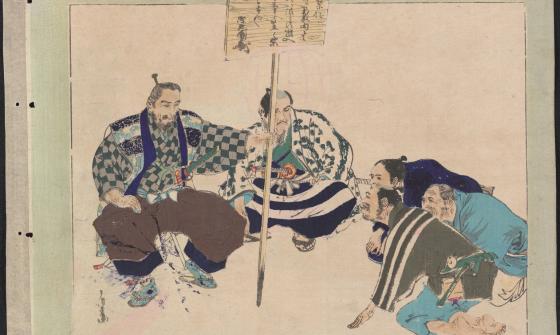
Toshitsune Inano, Tokugawa Mitsukuni [Tokyo], 1880, nla.gov.au/nla.obj-152444502
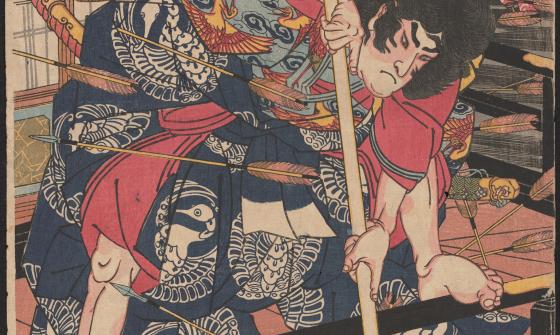
Kuniyoshi Utagawa & 歌川国芳, Honchō Suikoden gōyū happyakunin no hitori : Eda Genzō Hirotsuna [Kagaya Kichibei], 1830, nla.gov.au/nla.obj-151535028
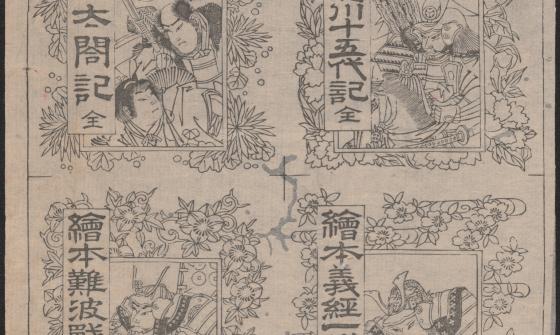
[Ehon cover drafts], nla.gov.au/nla.obj-151544183
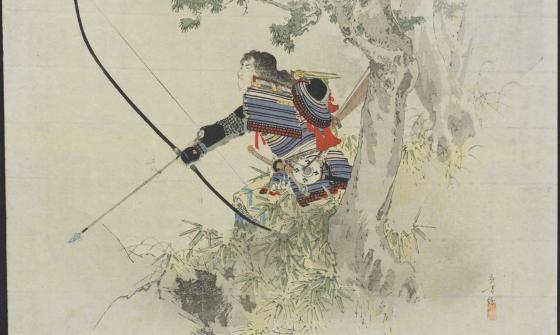
Toshikata Mizuno, Eishi sassō Hakubunkan, Tōkyō, 1899, nla.gov.au/nla.obj-152419290
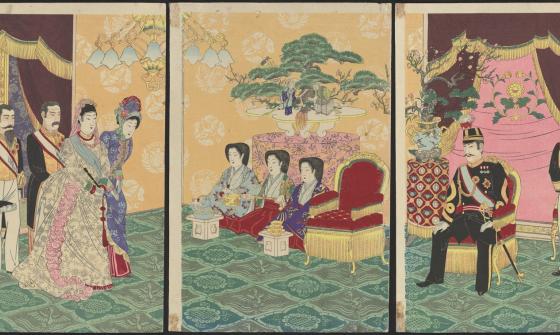
Nobukazu Yōsai & 楊斎延一, Kōi konreishiki no zu Hasegawa Tsunejirō, Tōkyō, 1900, nla.gov.au/nla.obj-151494111
Introductory activities
Activity 1: Exploring feudal system
Begin by asking the class to define what a feudal system is. Encourage them to identify the basic elements such as the relationship between lords, vassals, and serfs, the role of land ownership, and the exchange of services and protection.
Once students understand the feudal system, have them compare it to a modern form of government (for example, constitutional monarchy and democracy).
- What are the similarities between these systems? How do they differ? In what ways has the concept of power and governance evolved?
Activity 2: Japanese eras and comparative history
Explain that Japanese history is divided into eras based on the emperor’s reign or the location of the government (for example, the Edo period or Heian period).
- Ask students to think of other similar systems in different countries. For example, the Victorian era in Britain, the New Kingdom in ancient Egypt, or the Ming dynasty in China.
- Why do some cultures name historical periods after rulers or specific locations? Is this system useful for understanding history?
- Encourage students to discuss the pros and cons of this system and how it helps (or hinders) understanding of historical context.
Activity 3: Exploring different calendars
Explain to that not all cultures use the Gregorian calendar, which is commonly used in many parts of the world today.
- Ask why might different countries, religions, or cultures have developed their own calendar systems? Consider the influence of religion, climate, and historical events on calendar creation.
Have students research a different calendar system (for example, the Islamic Hijri calendar, the Hebrew calendar or the Chinese lunar calendar).
- Ask them to calculate what their date of birth would be in one of these calendar systems. This activity encourages students to think about how cultural perspectives shape the way we view and organise time.
The political system in shogunate Japan shared many similarities with the feudal system prevalent in medieval Europe. Have the class define what a feudal system is and what are the basic tenets of a feudal system. Have them compare their findings with a modern form of government and find the similarities and contrasts.
Japanese history is divided into eras named for the emperors and locations of the government. Ask them if they know of other similar systems in other countries (such as the Victorian era, New Kingdom of ancient Egypt, Ming dynasty China). Have the students discuss why this system may or may not be useful.
- Ask the students to consider that other cultures may use a different calendar to the Gregorian calendar. Why might a different country/religion/culture have a different calendar? Have the students research another calendar and find out what their date of birth might be.
Concluding activities
For centuries, Japan had very limited contact with the outside world under the sakoku (closed country) policy. When Japan finally opened up to global trade and exchange, there was a rapid sharing of culture, technology, and ideas between Japan and other countries.
National significance in media
The Bakumatsu (end of the shogunate) and Meiji Restoration (when Japan modernised) are important themes in many Japanese comic books and TV shows. Why do you think these events are so popular in Japanese media?
In Australia, we also see events of national significance in popular media. What important events from Australia’s history can you think of that feature in TV shows, films, or books?
Activity 4: Alternative future
Imagine if Japan had stayed closed:
- What parts of Japanese culture have influenced the world today?
- What things might we not have, or know about, if Japan had remained closed off?
Think about areas like food, fashion, art, technology, or even language.
Activity 5: Get creative
Look closely at the hexaptych (six-part image) Tōkyō Tsukiji Teppōzu kei.

Kuniteru Utagawa and 歌川国輝, Tōkyō Tsukiji Teppōzu kei Daikokuya Kinjirō, Tōkyō, Tsukiji, 1869, nla.gov.au/nla.obj-151438852
- Choose a character from the scene and imagine how their life has changed since Japan opened up to the world.
- Has their life improved or worsened?
- What new skills or knowledge have they gained?
- Do they want to stay in Japan or explore other countries now?
- What new opportunities are available to them?
- Write a short story or diary entry from the perspective of this character, reflecting on how Japan’s decision to open its doors to the world has impacted their life.
Curriculum links
This resource aligns with the Australian Curriculum: History ‘Asia-Pacific world’ for Year 8 students.
- The significant social, religious, cultural, economic, environmental and/or political features of different groups in the Asian-Pacific society (AC9HH8K12)
- A significant development, event, turning point or challenge that contributed to continuity and change in the Asian-Pacific society (AC9HH8K13)
- The experiences and perspectives of rulers and of subject peoples, and the interaction between power and/or authority in the Asian-Pacific society (AC9HH8K14)
- The role and achievements of a significant individual and/or group in the Asian-Pacific society (AC9HH8K15)
- Interpretations about the Asian-Pacific society and events, and/or individuals and/or groups connected to the society (AC9HH8K16)



